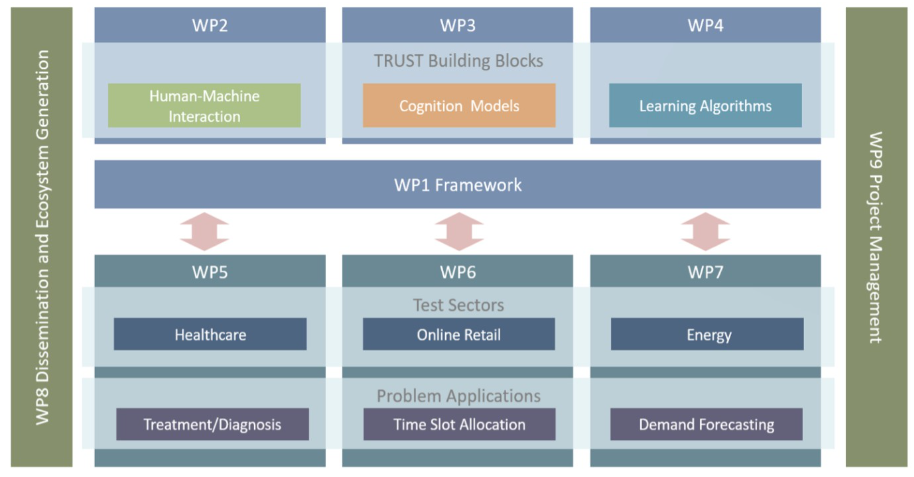Why?
AI is gaining importance in several areas, but the existing methods are virtually impossible to interpret and hence trust
What?
Build a method that is as effective as AI black-boxes and as explainable as theory-based approaches
How?
By putting machine learning working with analytical expressions, based on numerical (but representative) datasets, and iterate with human experts
An Introduction to Trust AI

TRUST AI System
TRUST AI aims at working towards the next generation of Machine Learning with improved performance-explainability trade-off. The resulting tool is TRUST (Transparent, Reliable and Unbiased Smart Tool) that will use symbolic learning methods to work with expressions rather than constants. That way, not only the human can understand the AI models better, but also the promoted interaction will accelerate the convergence of human and machine. This iterative process will be facilitated by different components, developed by an interdisciplinary consortium, and which communicate in the integrated framework from the Figure.
By being fundamentally explainable, TRUST is transparent, reliable, and able to prevent undesirable biases. Therefore, we envision TRUST being used in practice in a vast amount of applications and disrupting multiple sectors, where human control is essential. This project will tackle three use cases: (link to use cases): Cancer Treatment (Health), Time Slot Selection (Retail), Demand Forecast (Energy).

Work packages
TRUST is composed of 9 work packages (WP) which will be developed in a 48-month work plan. The work packages are structured around the following strategic targets:
- Development of building blocks: WP2 to WP4 develop the R&D areas and establish the foundations of the human-guided symbolic learningparadigm. WP1 concerns the overall design of this paradigm, as well as the consolidation and workflow of the building blocks.
- Adequacy to real applications: WP5 to WP7 are devoted to the use cases applications. They define requirements and ensure that TRUST apply to various problems and industries.
- Communication and dissemination: WP8 extends the project impact by promoting the results to the scientific community and industry. It also concerns the debate on societal and ethical issues.
- Project Management: WP9 refers to the project management and coordination of the partners.







